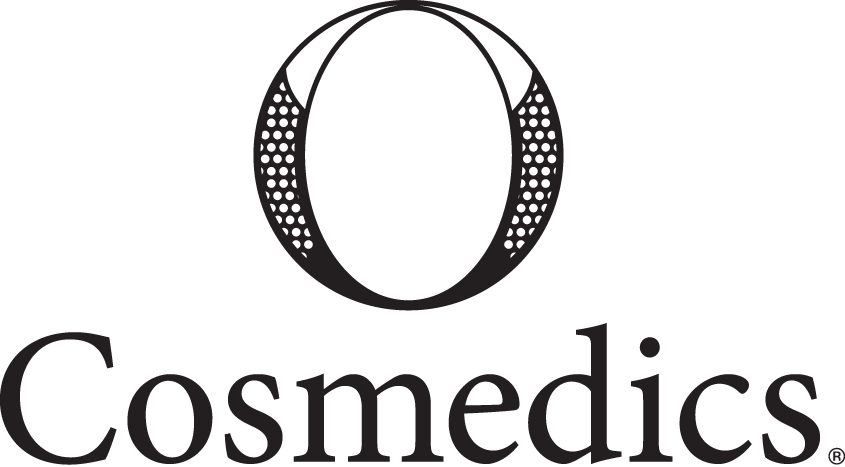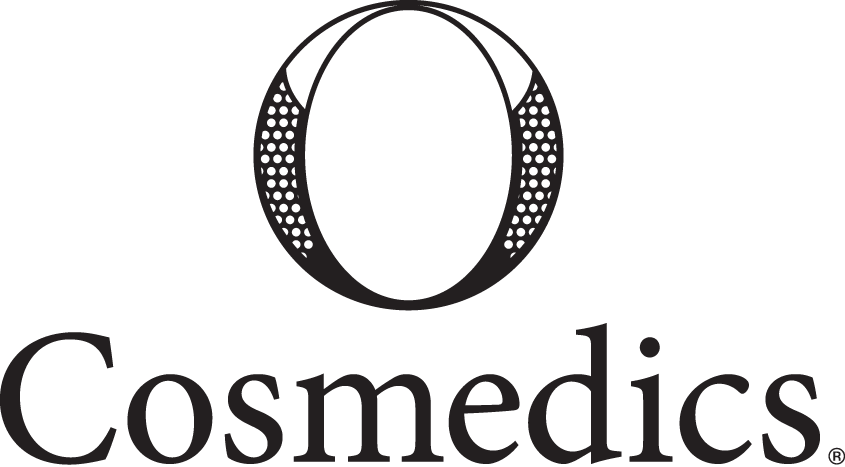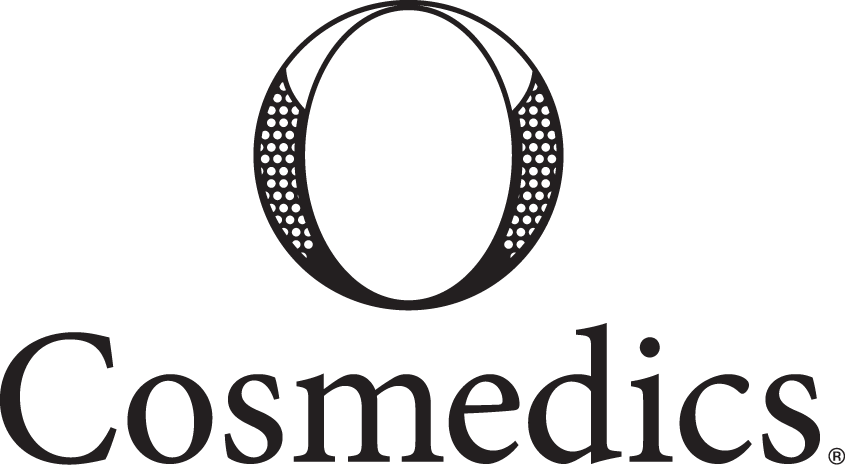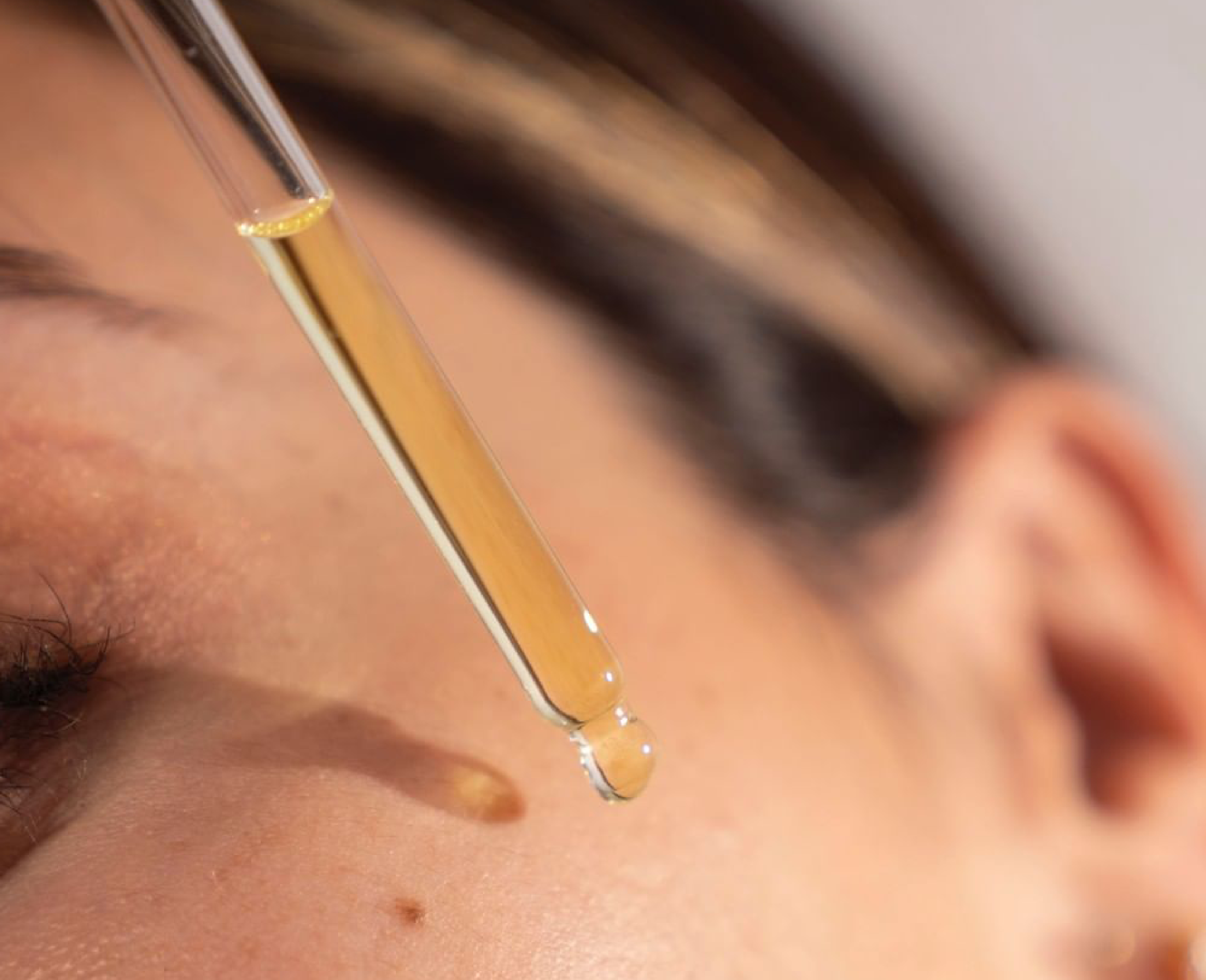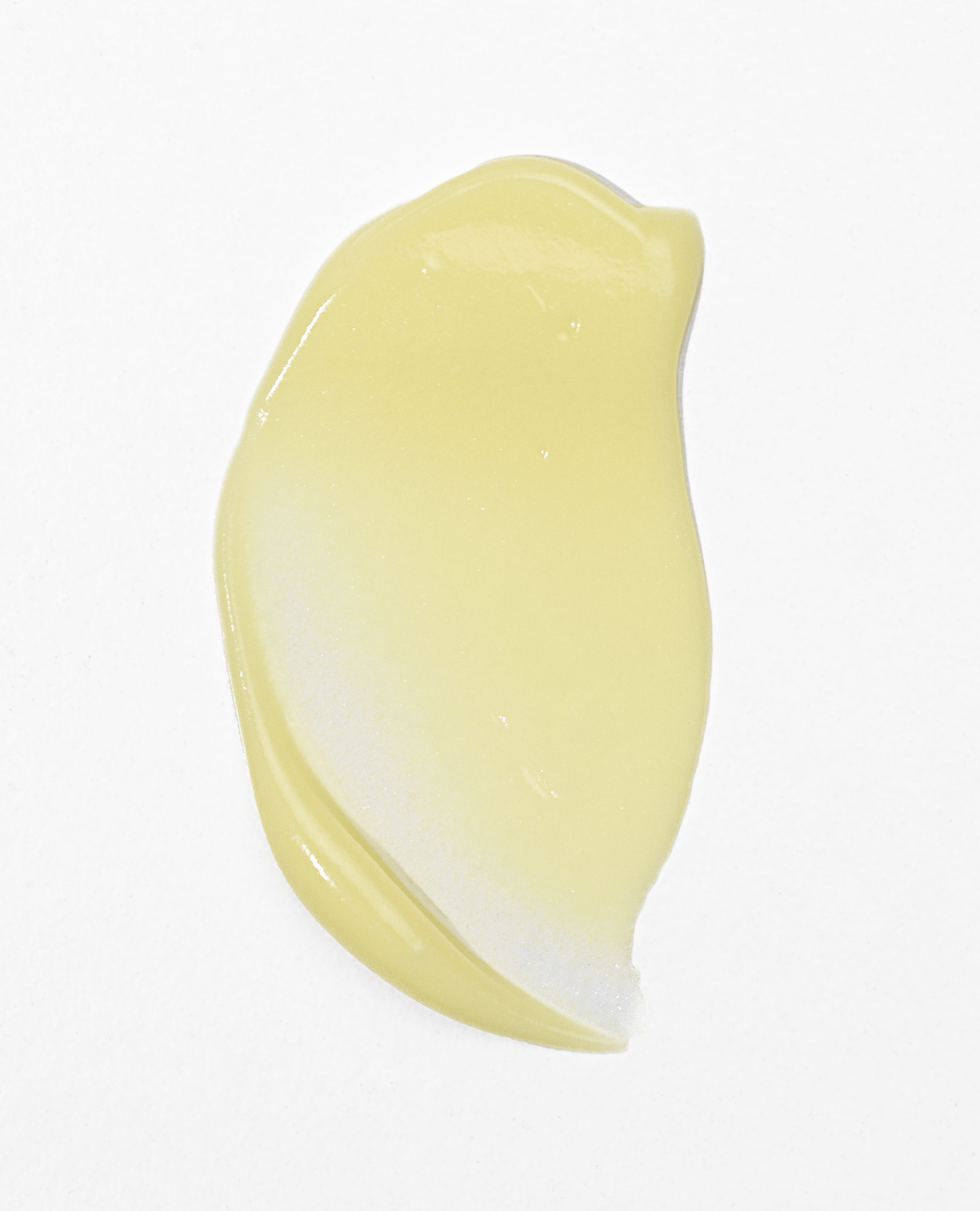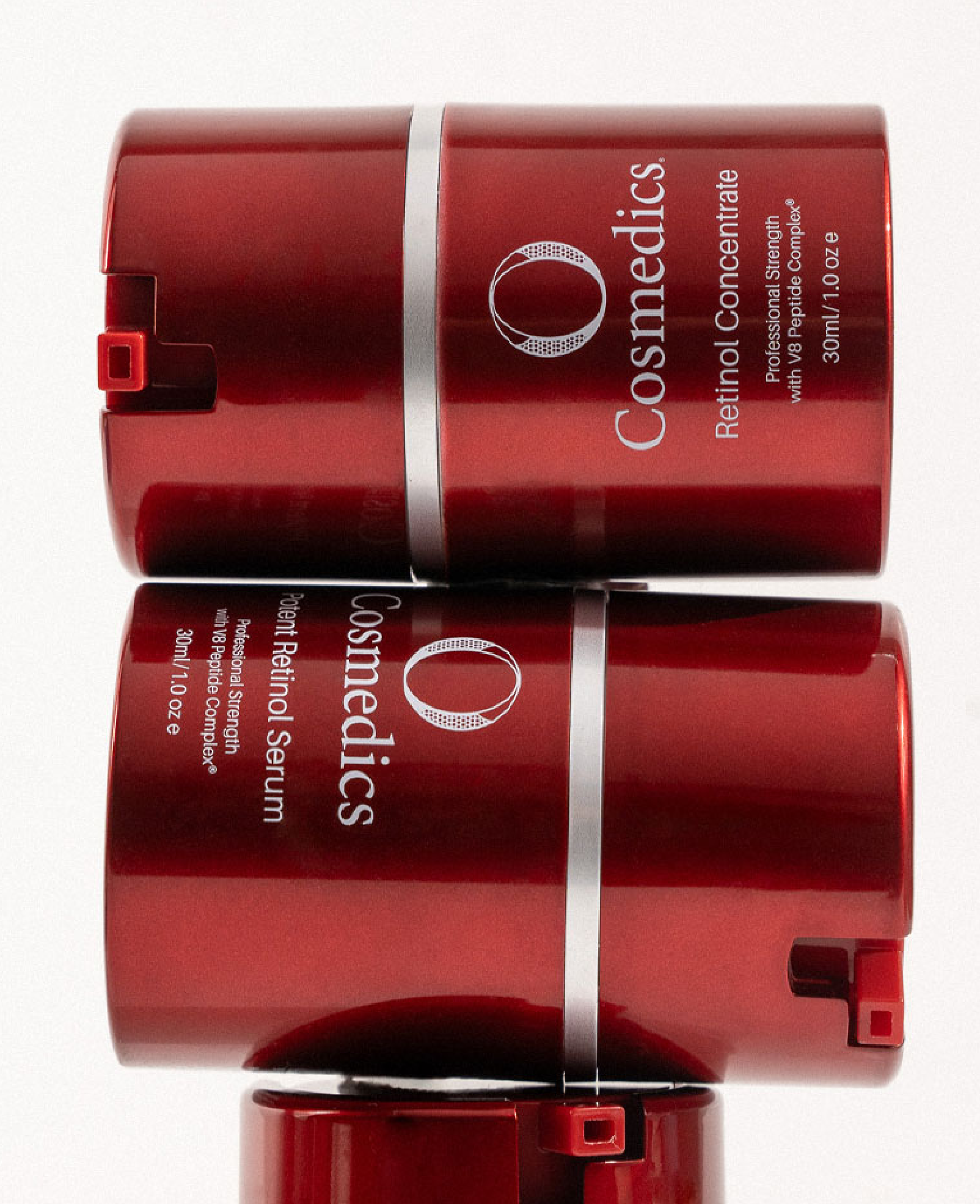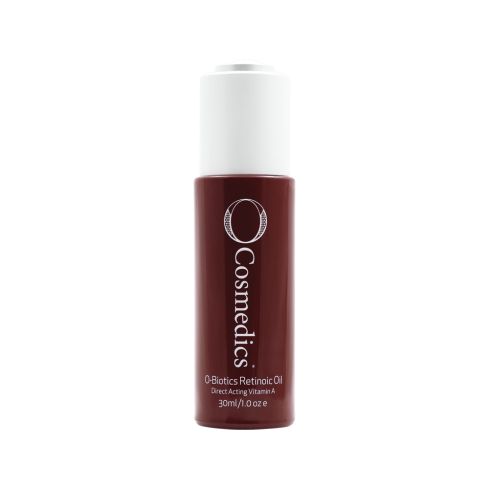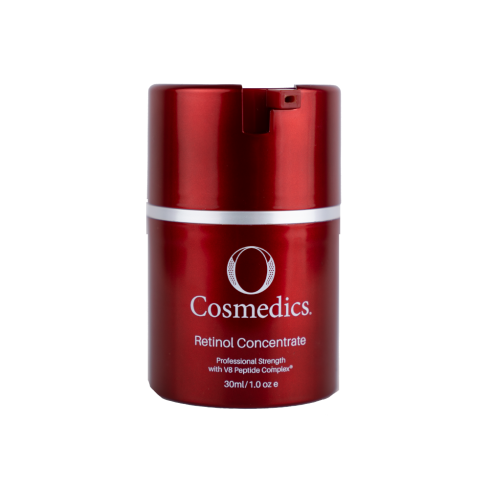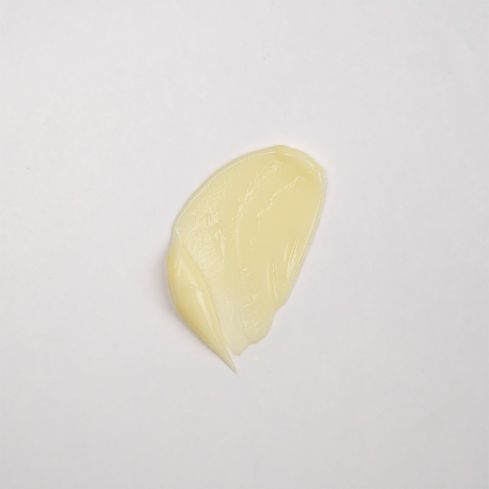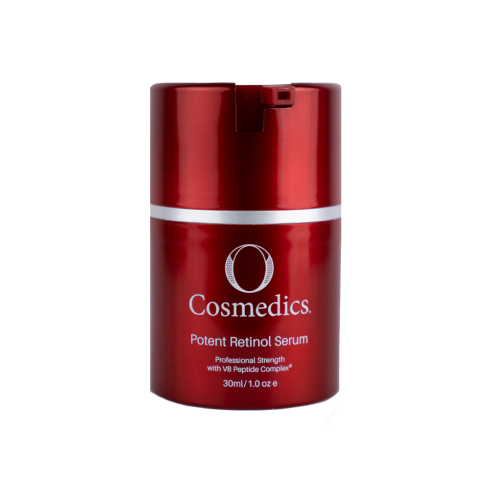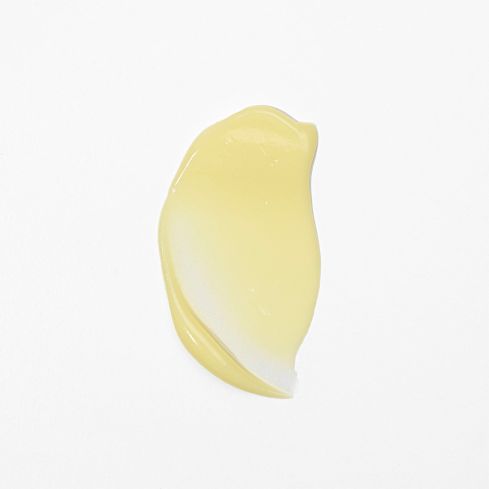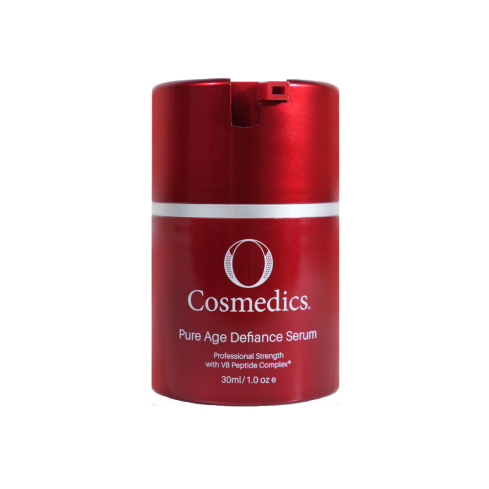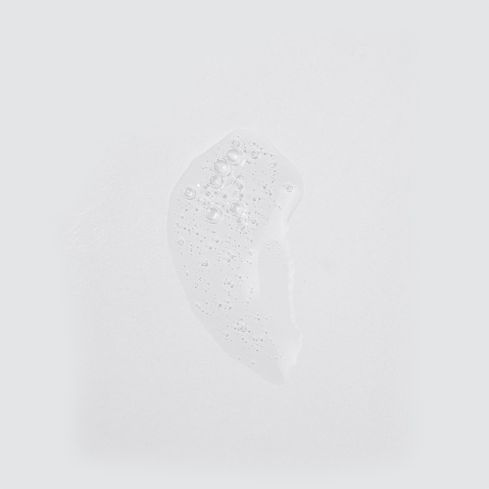How To Use A Retinol Serum In Your Skincare Routine
12 minute read
Retinol, Retinoids and Retinoic Acid… We know you’ve heard at least one of these terms whilst sifting through an avalanche of skin information after you heard that a Retinol Serum would be the answer to all of your skin’s woes. You may have even tried a Retinol for skin and found it caused even more woes after use or maybe you were told that a prescription form of Vitamin A from a dermatologist or GP is better… In any case, odds are that you’re confused – we get it! We’re here to help.
In this article you’ll find the answers (and then some) to the most commonly asked questions surrounding the longest standing buzzword ingredient: Retinol.
What is Retinol?
Derived from alcohol, Retinol is the most commonly used form of Vitamin A in cosmetic products over the counter and in professional beauty and skin clinics. It does not require a prescription and can at times be misunderstood due to its buzzword status. To clarify, not every Retinol Serum on the market will give you the same result; important factors like purity, quality, percentage, delivery and finally how well the skin converts the Retinol in the product into the form that the skin accepts (Retinoic Acid) make all the difference.
What Are The Benefits Of Using A Retinol Serum?
Oh, we love this question! It goes without saying Retinol, and other variants of Vitamin A, are anti aging heroes; though we know it feels like everything you read about skincare these days claims to be anti aging, right? Knowing how your active ingredients work separately from each other – like knowing your A’s from your B’s (pun intended) – is vital when purchasing active skincare.
The long list of benefits of using Retinol include:
- Repairing damage caused by UV to the DNA of skin cells for healthy cell production and cell function.
- Increasing skin cell turnover for smoother texture and fewer blockages in pores.
- Regulating sebum for healthy oil flow (which is otherwise thickened causing blocked pores) and ultimately resulting in less breakout and congestion.
- Stimulating collagen, elastin and GAGs (HA) in the dermal layers of the skin for fewer lines and wrinkles and increased volume and elasticity in the skin.
- Resurfacing the outer layer of the skin (stratum corneum) to help remove hyperpigmentation and give a more even skin tone.
In short, a Retinol Serum is an anti aging serum. However, it is also a non-negotiable for optimal skin function as it plays a role in all cellular processes. Choosing the right form of Retinoid (Vitamin A) for your skin is paramount to achieving results with all common skin conditions.
What Are The Different Forms Of Retinol?
Ok, first and foremost, the correct way to ask this question is: “What Are The Different Forms of Vitamin A?” as Retinol is just one. The correct term to describe the variants of Vitamin A is actually Retinoids, and Retinoids require conversion into Retinoic Acid (the form of Vitamin A the skin accepts).
Let’s break that down a little further and discuss:
01 Which form of Retinoid (Vitamin A) is most suitable for your skin.
02 The difference between the many forms of Vitamin A.
03 Why a dermatologist or GP may automatically opt for a prescription over the many, many other more tolerable and evidence-based forms of Retinoids.
In order for Retinoids and Retinol (Vitamin A) to create change and provide health and long-term anti aging benefits to the skin they need to undergo a four-step conversion to become Retinoic Acid once applied to the skin. This form holds the key to unlocking access inside of skin cells and fibroblasts (collagen and elastin producing cells) where it can then repair damage caused by UV and initiate all cells to function correctly again.
Listed in their direct order of how they convert once in the skin are the types of Vitamin A, also known as Retinoids, commonly used in skincare and anti aging serums:
Retinyl Palmitate & Retinyl Acetate: Widely used fatty esters of Vitamin A which, when used in skincare, act as antioxidants that protect the skin from free radical damage. Gentle, slow working and classified as the weakest forms of vitamin A, both of these ester forms of Vitamin A require three conversions to become Retinoic Acid to make cellular change and repair damage. The fewer the conversions, the better the result of the Vitamin A. Do they make it through the conversion steps? Not always. It's safe to say these ester forms of Vitamin A offer antioxidant benefits to the skin but skins displaying sluggish oil flow, aging, pigmentation and congestion should incorporate other forms of Vitamin A that are proven to convert and work faster.
Retinol: The alcohol derivative of Vitamin A famously known as an anti aging hero for its quick ability to smooth the texture of the skin due to its resurfacing effect and fast absorption. The smallest molecule of Vitamin A in skincare, when used on the right skins Retinol is a gun for removing hyperpigmentation and regulating sebum consistency for excessively oily skins and those that are thickened and rough to touch. The purity, percentage and delivery of Retinol plays a fundamental role in its ability to go through the conversion and requires only two conversions to become Retinoic Acid.
The alcohol derivative of Vitamin A famously known as an anti aging hero for its quick ability to smooth the texture of the skin due to its resurfacing effect and fast absorption. The smallest molecule of Vitamin A in skincare, when used on the right skins Retinol is a gun for removing hyperpigmentation and regulating sebum consistency for excessively oily skins and those that are thickened and rough to touch. The purity, percentage and delivery of Retinol plays a fundamental role in its ability to go through the conversion and requires only two conversions to become Retinoic Acid.
Retinaldehyde/Retinoic Ester: Revolutionary types of Vitamin A rarely seen in potent forms in cosmetic use due to being notoriously unstable in high dosages. They have a direct conversion to Retinoic Acid by passing all of the above forms and are proven to work 11 times faster than Retinol with no added irritation. Given that it is not of an alcohol derivative like its sibling Retinol, it is easily tolerated by the most sensitive and compromised skins as an anti aging serum.
Retinoic Acid: The form of Vitamin A the cell’s DNA uses to repair damage and provide all the benefits that Retinol claim. Found only in prescription form, this direct method can cause extreme irritation, redness and sensitivity due to its acidic approach to the surface of the skin. It is often used as a short-term fix, leading to extremely dry skin. However, with the abundance of advanced and innovative varying forms of Vitamin A and anti aging serums now used in professional skincare, there really is no need to be so aggressive to the skin.
Is Retinol Just A Really Strong Exfoliant?
A commonly asked question and misconception due to the possible response of flaky skin and areas of dryness when first using retinol for skin. Short and long answer: NO. Whilst some people experience momentary flakiness as the old, thickened layers of the skin begin to shed off, skins using a Retinol Serum have increased cell production. Therefore, as the old cells shed off, they are replaced by healthy new cells underneath.
Does Your Skin Have To Peel For Retinol To Work?
Absolutely not. Often this common response of skin peeling has to do with over using your Retinol or using too much at once. It is not the type of ingredient that works on a ‘the-more-you-use-the-faster-it-works’ principal: if anything, it’s the opposite. Our skin must build up a tolerance to Vitamin A and with this we always take the ‘drip feed the skin’ approach.
How Do I Use A Retinol Serum?
At O COSMEDICS we recommend slowly introducing a Retinol Serum into your skincare regime in the evening only, beginning with every second to third night and slowly building it up following the direction your skin is giving you. O COSMEDICS Potent Retinol Serum and Retinol Concentrate are anti aging serums designed to be mixed into hydrators to enhance the delivery and tolerance.
What Should I Do If My Skin Reacts To Retinol?
In most cases the correct term is response rather than reaction; an allergic reaction to Vitamin A is not possible but a response to it is.
If upon use in the first week you experience dryness, flaky skin or sensitivity then you would cease use until these responses subside and then slowly reintroduce. Some skins may only be able to tolerate the use of Retinol Serums 2-3 times a week, and that is perfectly okay.
If after the first two weeks you experience no response, you may increase use to every night and monitor the skin's response.
If your skin never feels as though it is able to tolerate either Retinol Serums then we recommend using another form of Vitamin A Serums like in Retinoic Oil which does not need to be slowly drip fed into the skin; use every night given the direct action to Retinoic Acid, bypassing the possible irritation of Retinol.
What Skin Types Is Retinol For?
If you’re reading this, you know that all skins need Vitamin A for healthy cell function and about the different forms of Retinol, however if we’re talking specifically about Retinol this form of Vitamin A would be reserved for oily, thickened, congested and sun damaged skins, skins that are prone to acne and breakouts and never for a sensitive, dry or inflamed skin. These more delicate skin types are better suited for anti aging serums containing Retinaldehyde and Retinoic Ester, which are other forms of Vitamin A.
When Should I Start Using Retinol?
Incorporating Retinol and other forms of Vitamin A anti aging serums into your skincare regime should begin in your early twenties, as prevention is always better than a cure. Our fibroblasts (collagen and elastin producing cells) begin to decline in function as early as late teens – early twenties therefore starting early with the correct form of Vitamin A for your skin is key to maximising your anti aging efforts and preventing unwanted skin conditions like premature aging, hyperpigmentation and sun damage.
What Other Active Ingredients Should I Avoid When Using Retinol?
Almost all other active ingredients play nicely with Retinol and other forms of Vitamin A with the exception of Vitamin C. These two ingredients aren’t the best of friends and therefore it is best to use your Vitamin C Serums in the morning to prevent from UV damage, protect and brighten a dull skin. Finish your day with Retinol for skin in the evening as it repairs, rejuvenates and smooths the skin while you sleep for maximum anti aging benefits. As with all active skincare and a general rule of thumb, the use of SPF is mandatory in the morning especially when using an anti aging serum containing Retinol. Protecting those fresh, healthy new skin cells against UV damage is imperative and lifesaving!
If you’re using any AHAs or BHAs in your routine be mindful of when you begin introducing your Retinol Serum into your routine as these powerful exfoliating acids will ramp up the delivery of the Retinol. It may be best to alternate the evenings in which you use your AHA/BHAs (we like to call this drip-feeding the actives, or better known as Skin Cycling) to allow the skin to build up the tolerance to Retinol.
How Do I Layer Retinol With Other Active Ingredients?
It is important to know that there are a host of other active ingredients that work synergistically with your Retinol Serums. These ingredients include:
Niacinamide: Commonly used in formulations to alleviate irritation and support immune health. You can also check out our guide on How to Use a Niacinamide Serum to learn more about using it in combination with Retinol.
Hyaluronic Acid: The hydration superhero that draws moisture into the skin and keeps it there is the ultimate pal to have alongside your Retinol Serum to keep the skin hydrated.
Vitamin E (D-Alpha Tocopherol): Super antioxidant, skin conditioning and a powerhouse healing ingredient, Vitamin E in formulations with Retinol decrease the chances of irritation by keeping the skin nourished and protected.
Given O COSMEDICS Retinol Serums are designed to be mixed into our hydrators that would have these applied in the evening following the thin to thick approach. Beginning with water-based serums, gels, lotions, hydrators and oils. Following this approach will ensure your other serums are absorbed effectively into the skin.
If you’re still unsure about how to incorporate Retinol into your skincare routine, check out our guide on How to Layer Skincare Products.
When Will I See Results?
Typically, it takes up to 12 weeks to see transformative results with the use of retinol for skin. If you think of the billions upon billons of calls within the layers of your skin, this timeframe makes a lot of sense! Nothing great comes fast but with due diligence, patience and consistency, your skin will build a tolerance to Retinol and an improvement in skin texture, tone, pore size and lines and wrinkle reduction will follow.
Don’t ever forget your SPF in the morning or you will be reversing the repair form the night before. O’s zinc-based SPF Mineral Pro range has the perfect addition for all skin types needing sun protection that are almost edible as they smell good!
If you need help choosing a suitable sunscreen for your skin, check out our Ultimate Guide to Choosing the Best Sunscreen For Your Skin!
The O COSMEDICS Retinol And Vitamin A Range
Now that you’re equipped with the knowledge regarding Retinol for your skin as well as the forms of Vitamin A you can confidently choose which is best suited to you. Here’s your cheat sheet, quick guide to the O COSMEDICS Vitamin A (Retinol) Range:
Retinoic Oil
Boasting direct acting Retinoic Ester, this squalene-based, anti aging oil serum Retinoic Oil is ideal for dry, dehydrated, sensitive or irritated skins that have previously not been able to tolerate Retinol or have a general constant feeling of extreme dryness.
Potent Retinol Serum
Pure, encapsulated 0.5% Retinol Serum in a lotion form formulated with Niacinamide, Hyaluronic Acid and Vitamin E with added antioxidants and peptides. The Potent Retinol Serum is the ideal place to start whether your skin is oily or normal. This much loved anti aging serum prevents and correct unwanted skin conditions whilst feeding skin an array of other active ingredients.
Retinol Concentrate
This anti aging serum contains pure, encapsulated 1% Retinol in a lotion form formulated with Niacinamide, Hyaluronic Acid and Vitamin E with added antioxidants and peptides. This high-strength anti aging corrector Retinol Concentrate is designed for seasoned Retinol users and those that have already used Potent Retinol Serum and require a higher dosage (stubborn skins). This Retinol Serum boasts the highest percentage of pure Retinol available before prescription and should only be used for the skins that need it including extremely tough, thickened, sun damaged skins.
If you’re still unsure which Vitamin A or anti aging serum is right for you, you are always welcome to start a live chat with an O Expert at www.ocosmedics.com or (highly recommended) to visit one of our thousands of O Clinics.
An absolute non-negotiable in the anti-aging and skincare world, a Retinol Serum as well as other forms of Vitamin A will transform your skin, elevate all other products being used and amplify all professional skin treatments you are investing in.
